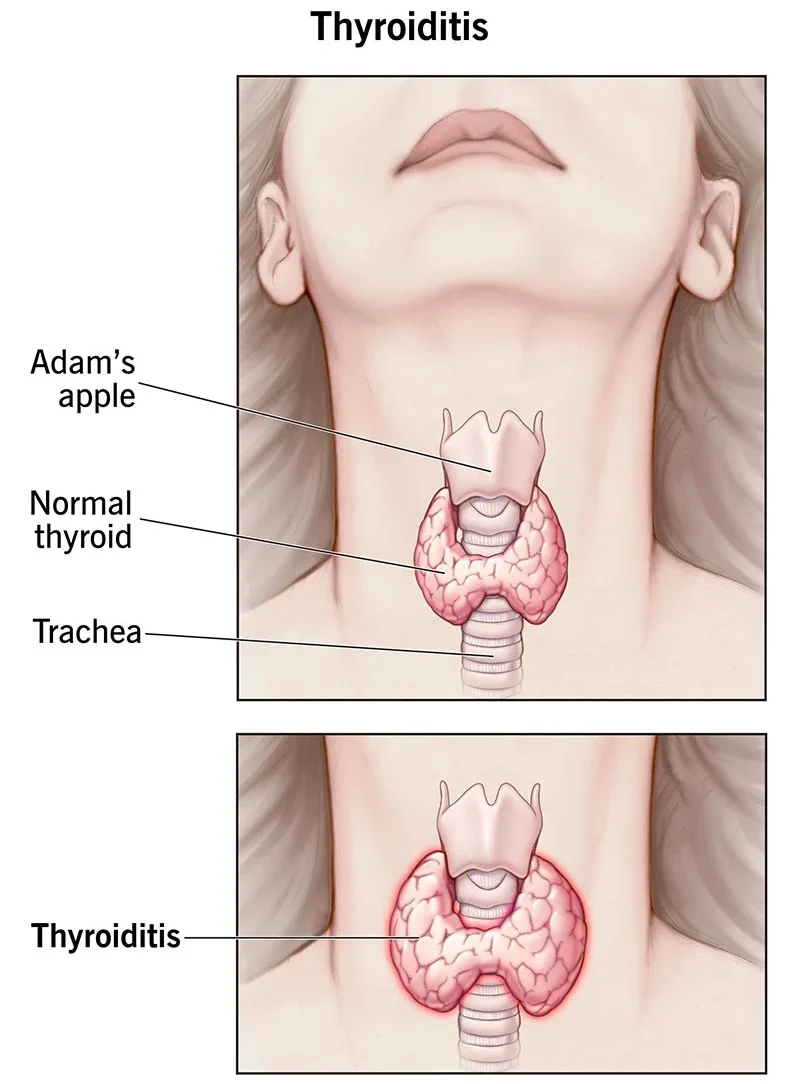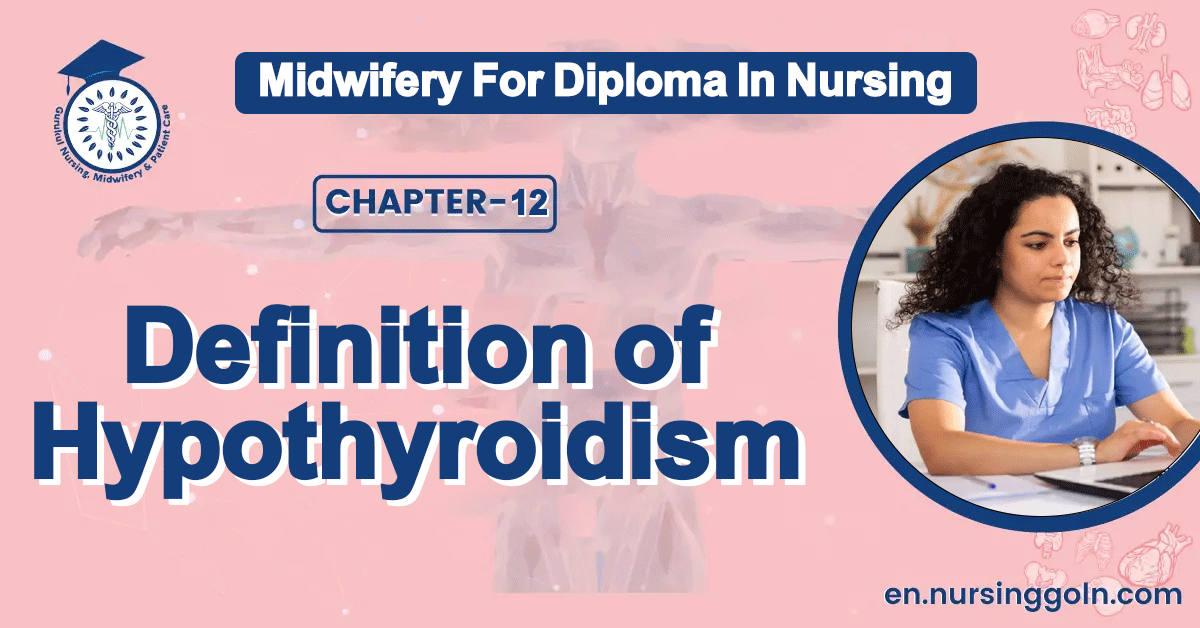Definition of Hypothyroidism – This course is designed to understand the care of pregnant women and newborn: antenatal, intra-natal and postnatal; breast feeding, family planning, newborn care and ethical issues, The aim of the course is to acquire knowledge and develop competencies regarding midwifery, complicated labour and newborn care including family planning.

Definition of Hypothyroidism
Primary hypothyroidism in pregnancy is mostly related to thyroid autoimmunity, Myxedema rarely presents in pregnancy because they tend to be infertile. It is important to diagnose the condition because of the increased rate of fetal loss and reduced IQ in these children. Complications of pregnancy like preeclampsia and anemia are high.
Diagnosis:
♦ Diagnosis may be extremely difficult. Symptoms manifest as excessive weight gain despite poor appetite, cold intolerance, and a roughening of the skin.
♦ Thyroid function measurement is taken and if low, the woman is commenced on thyroxine. Therapy is started with levothyroxine, which is titrated to normalize thyroid function. The assessment is done on a monthly basis.

Antenatal Care:
♦ Women with pre-existing hypothyroidism will require monitoring of their thyroid function during pregnancy and their medication adjusted as necessary.
♦ Hypothyroid pregnant women tend to gain weight easily and the midwife needs to observe this closely for any deviation from the expected weight gain (Smith, 1990). Constipation may also be a problem because it is exacerbated by both hypothyroidism and pregnancy.
♦ Dietary advice such as increasing fiber content and fluid intake may help alleviate the problem.
Postnatal Care:
♦ After delivery, the neonate’s thyroid status should be checked to identify whether there is any neonatal hypothyroidism present.
♦ There is no contraindication to breastfeeding, but thedose of thyroxine may need adjustment because of the maternal weight loss following delivery.

Postpartum Thyroiditis:
About 10 to 15 percent of women develop this condition due to autoimmune thyroid disease. This is a transient disorder that occurs during the first year after parturition (Bishnoi and Sachmechi, 1996).
The condition is characterized initially by symptoms of mild hyperthyroidism and may mimic postpartum psychosis (Walfish and Chan, 1985). Recovery is usually spontaneous in most women but the disorder tends to occur with subsequent pregnancies. About two-thirds will ultmately become euthyroid and the remaining one-third will become hypothyroid (Dutta, 2001).
Read More.
